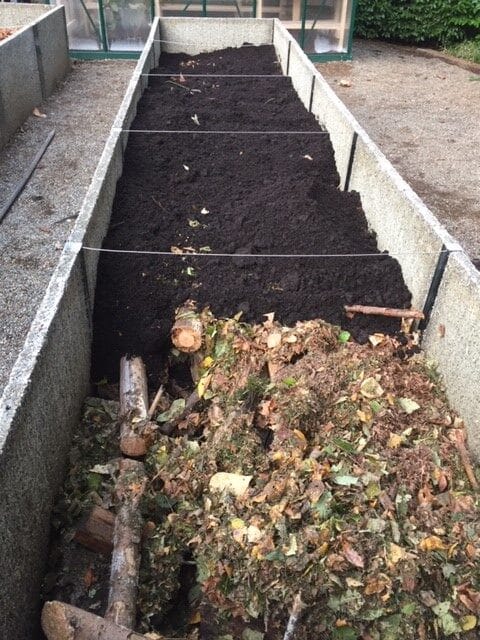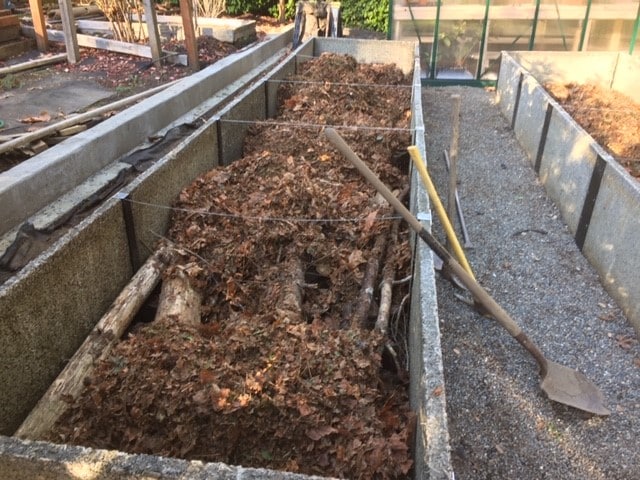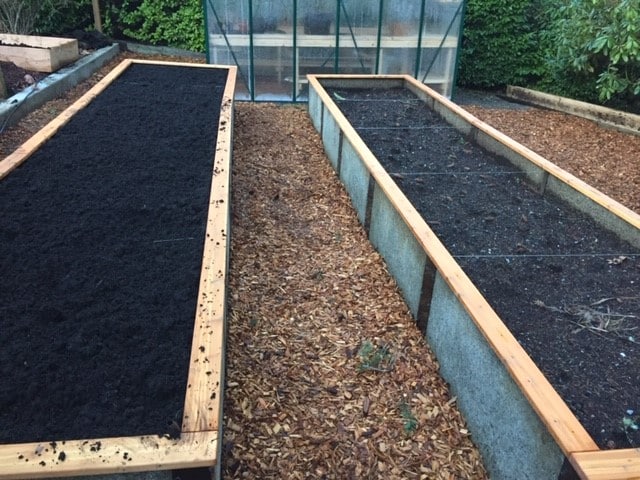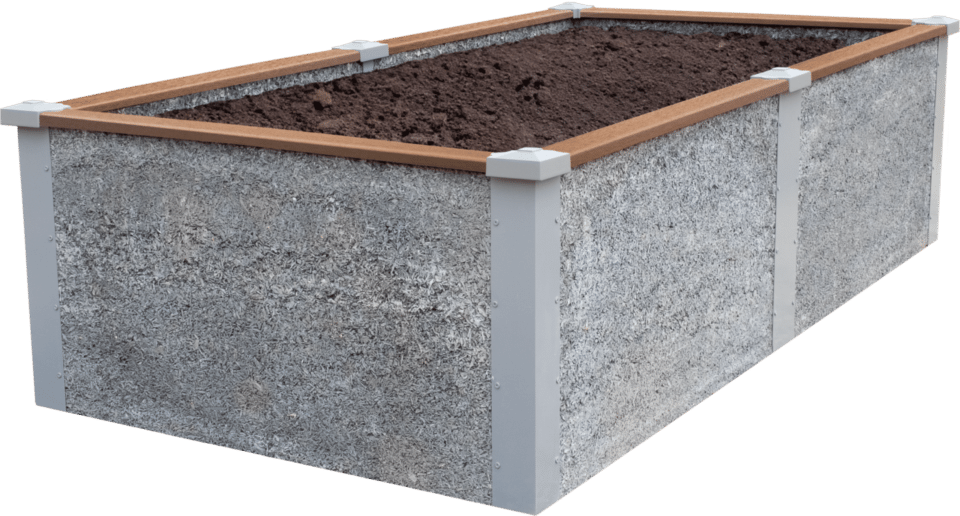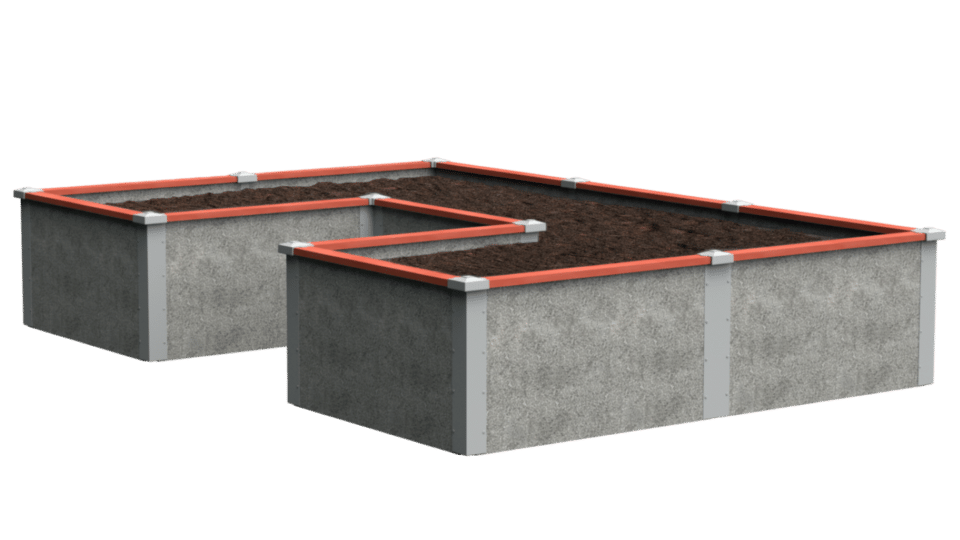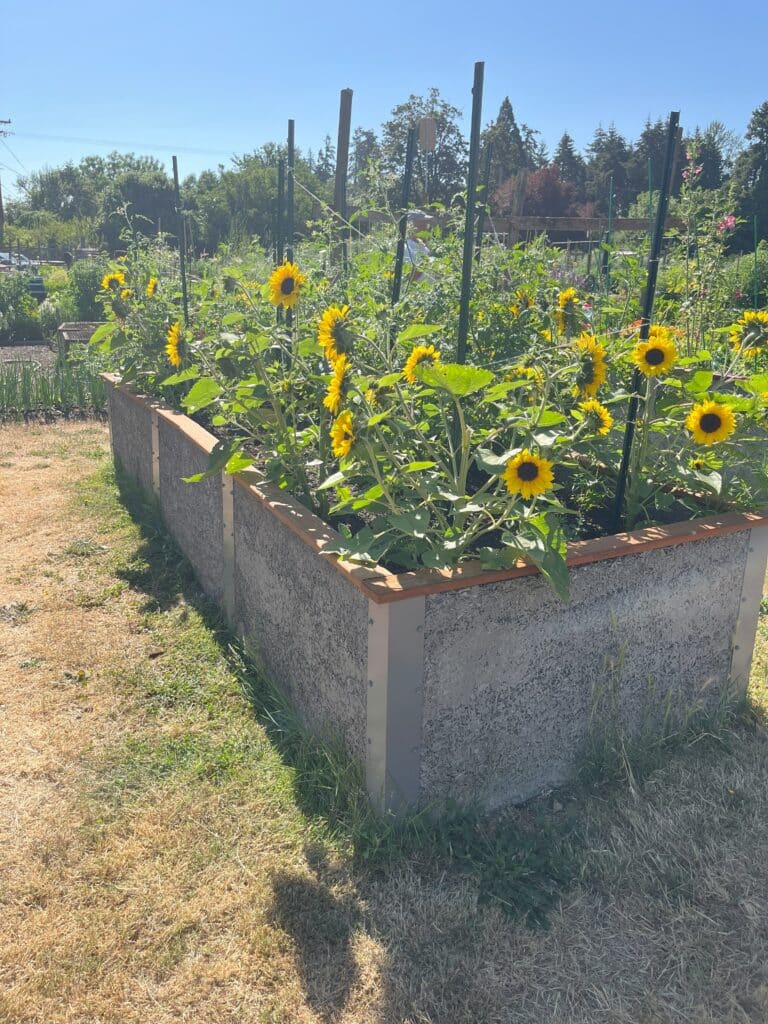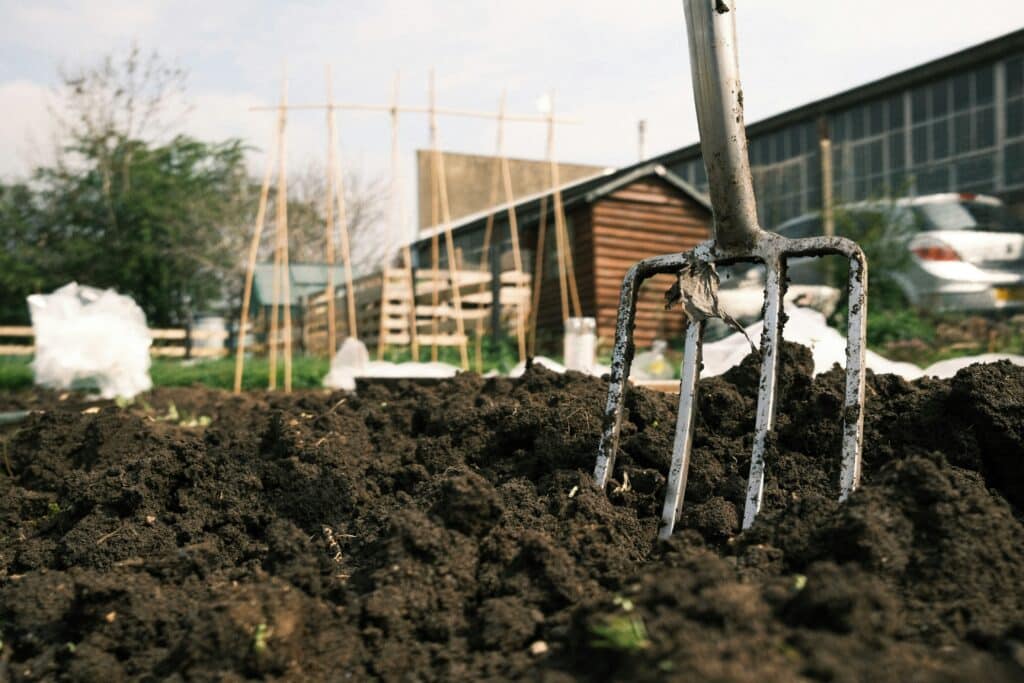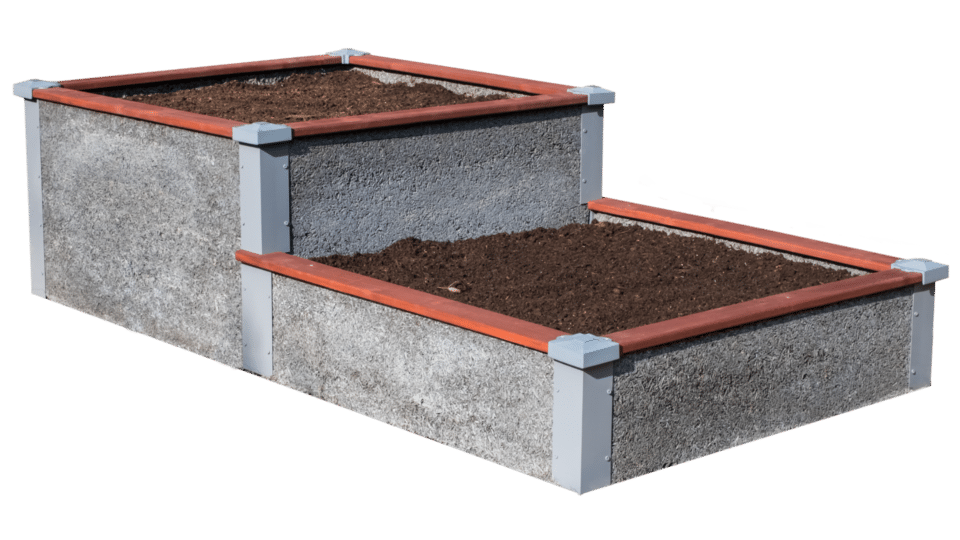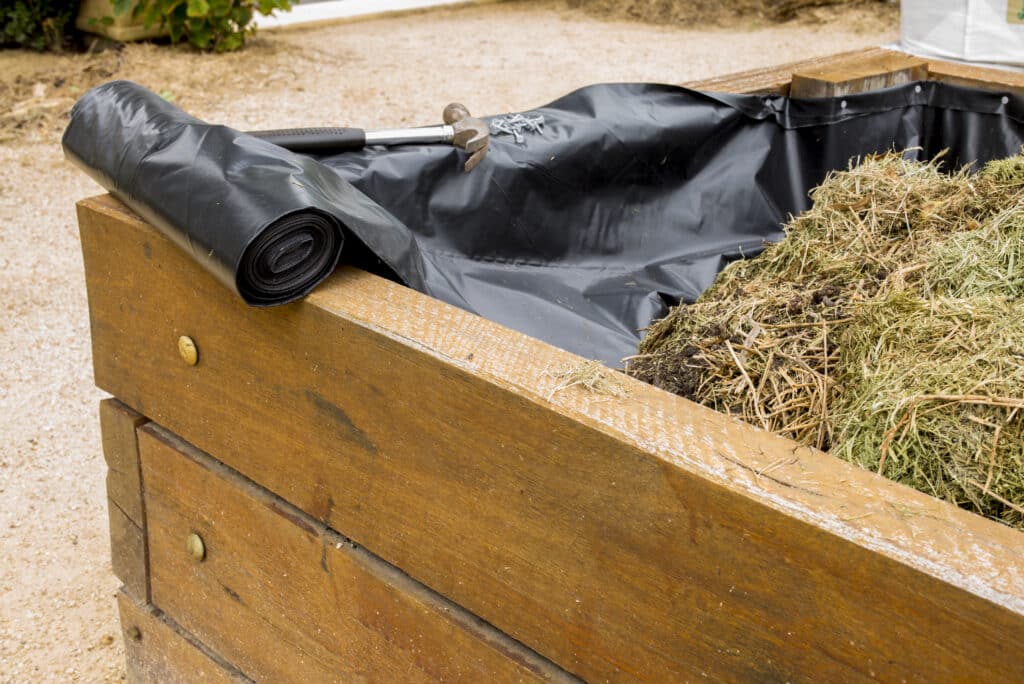
Whether you spell it hugel culture, hügelkulture, or hugelkultur, it’s pronounced hyoo-gul-culture. It’s a German word that means “hill culture” or “mound culture.” Germanic areas have practiced this method of creating rich soil for hundreds of years. You will typically see hugelkuture beds created from mounds of debris such as small branches or larger pieces of wood and leaves, but hugelkulture for raised beds is also possible and easy.
Filling quality soil into a two foot deep garden bed can be a challenge. Using the ideas from hugelkulture for raised beds can make the process fun and low-cost. The layering process benefits air circulation and moisture retention, in addition to the richness of composting materials. Quite a few of the people who purchase Durable GreenBeds have done it and are enthused about it. When you hugel culture, you will typically clear the area where you want the mound to be. Then heap up woody material and cover it all with compost and soil. Chopped up and decaying tree trunks, fallen branches, leaves and other plant waste, and unfinished lumber can all be piled up. You can use any woody material, but if the woody material is already partially composted that’s even better because it gives you a jump start on time.
What happens is the woody material soaks up water and very slowly releases it. This means the plants in this area benefit from prolonged moisture that doesn’t need to be externally applied as often. Beyond that, the wood slowly decays, which builds rich soil over time. Permaculture farming embraces hugelkulture because it utilizes woody material that would otherwise be wasted. It also builds soil structure, requires less watering than other types of garden methods, and grows really great plants!
How to Create a Raised Bed Hugelkulture
When you’re creating hugelculture soil in a raised bed, here’s what you do. Line the bottom of your two-foot-deep Durable GreenBed raised bed with logs (we recommend 1 inches to 5 inches in diameter), or split wood, whatever you have. Definitely use any piles of wood that have been laying around that is starting to decay or get punky (soft, rotted, covered with fungi). Gathering debris from wooded areas is great. On top of the layer of logs, pile up a layer of leaves and / or wood chips. This fills in the space between the larger wood.
It is OK to use more thin branches on top of that leaf litter pile. Straw is OK too. Finally, to top it all off, cover the whole pile of carbon with manure to get a good nitrogen-carbon balance. You definitely don’t want to skip this step because otherwise all that decaying carbon will rob your garden of nitrogen. Water each layer very well as you build it up. For immediate planting, you can add a layer of well-composted topsoil to this mix for immediate planting, but it is not required.
You can plant right in this pile of debris immediately. Or, you can prepare the bed months in advance. If you create your raised bed hugelculture now, it can be ready for your spring planting. Or get a new bed and build your hugel mound for your winter planting. Once you’ve prepared the bed, add your seeds or transplants just as you would any other garden bed.
Benefits of Hugelkuture For Raised Beds
If you start or re-start your raised bed with this layering method, you’ll be rewarded with a pile of material that hangs on to moisture so well that you will need a lot less irrigation during the dryer summer months. As the wood breaks down, it is feeding your soil. The decaying wood supports a variety of beneficial insect life, including worms and soil bugs that break down organic matter. Some experts say this benefit of feeding your soil can last for 20 years. Combine this with the 20-25 years of life that Durable GreenBeds typically last for most people, and you have serious gardening sustainability and success!
Since it can take several years for the wood matter to completely break down, you will notice an extra source of heat for at least the first couple of years. As your wood slowly breaks down, it contributes heat to the bed. Your soil will warm up faster, and stay warm longer, which means your growing season will be longer too. This type of bed works anywhere, in any environment. So whether you live on the coast, in the desert, or the mountains, you can build a hugel raised bed!
Other benefits too important to not mention are the rewards of saving on buying new soil every year or two. Using hugelkulture for raised beds improves drainage. And, of course, you get all the general benefits of a raised bed which include being able to place your bed anywhere, even on less-than-desirable soils, being able to create a microclimate through your placement of your bed, and not having to break your back when you want to plant or harvest!
Don’t Use These Materials In Your Hugel Culture Soil
Hugekulture for raised beds works so well, but there are some things that you don’t want to put in your hugel mound. Namely, avoid toxic woods such as black walnut or black cherry wood and do not include household pet waste in the manure layer. Cow, chicken, or steer manure works well. Avoid weed seeds or toxic debris such as poison ivy. The goal is to have the wood actually break down, so don’t use longer-lasting woods such as cedar or redwood, but of course you can feel free to use this wood if that is what you have—it will just take longer to provide you with the rich soil you’re after. Don’t ever use treated wood.
Happy hugelkulturing! Let us know if you have questions about our beds!
There's Nothing Like Durable GreenBeds
It's the Walls!™
- Breathable
- Well Draining
- Higher Yields
- Prevents Slugs and Pests
- Non-Toxic
- 20-25 Year Lifespan
Shop Durable GreenBed Kits
- Please choose product options by visiting 4'x4'x2' Tall Square Raised Garden Bed Kit.
-
Rectangular Raised Garden Bed Kit
$471.00 – $2,085.00 Select options This product has multiple variants. The options may be chosen on the product page -
L-Shaped Raised Garden Bed Kit
$786.00 – $1,305.00 Select options This product has multiple variants. The options may be chosen on the product page -
U-Shaped Raised Garden Bed Kit
$1,199.00 – $2,446.00 Select options This product has multiple variants. The options may be chosen on the product page
Shop Durable GreenBed Raised Garden Bed kits
-
Rectangular Raised Garden Bed Kit
$471.00 – $2,085.00 Select options This product has multiple variants. The options may be chosen on the product page -
L-Shaped Raised Garden Bed Kit
$786.00 – $1,305.00 Select options This product has multiple variants. The options may be chosen on the product page -
4’x8’ Stepped Raised Garden Bed Kit
$865.00 – $1,073.00 Select options This product has multiple variants. The options may be chosen on the product page -
U-Shaped Raised Garden Bed Kit
$1,199.00 – $2,446.00 Select options This product has multiple variants. The options may be chosen on the product page

